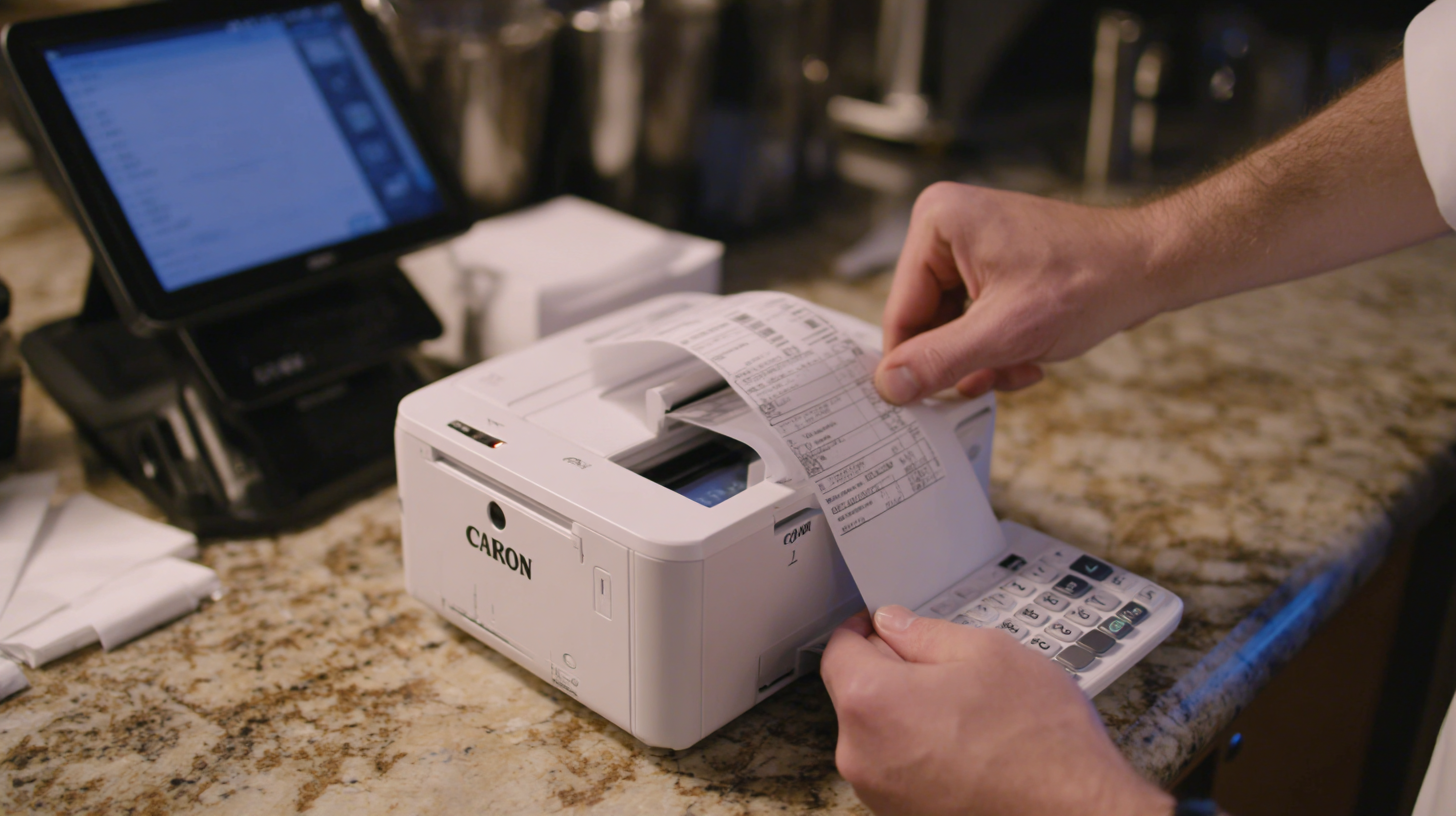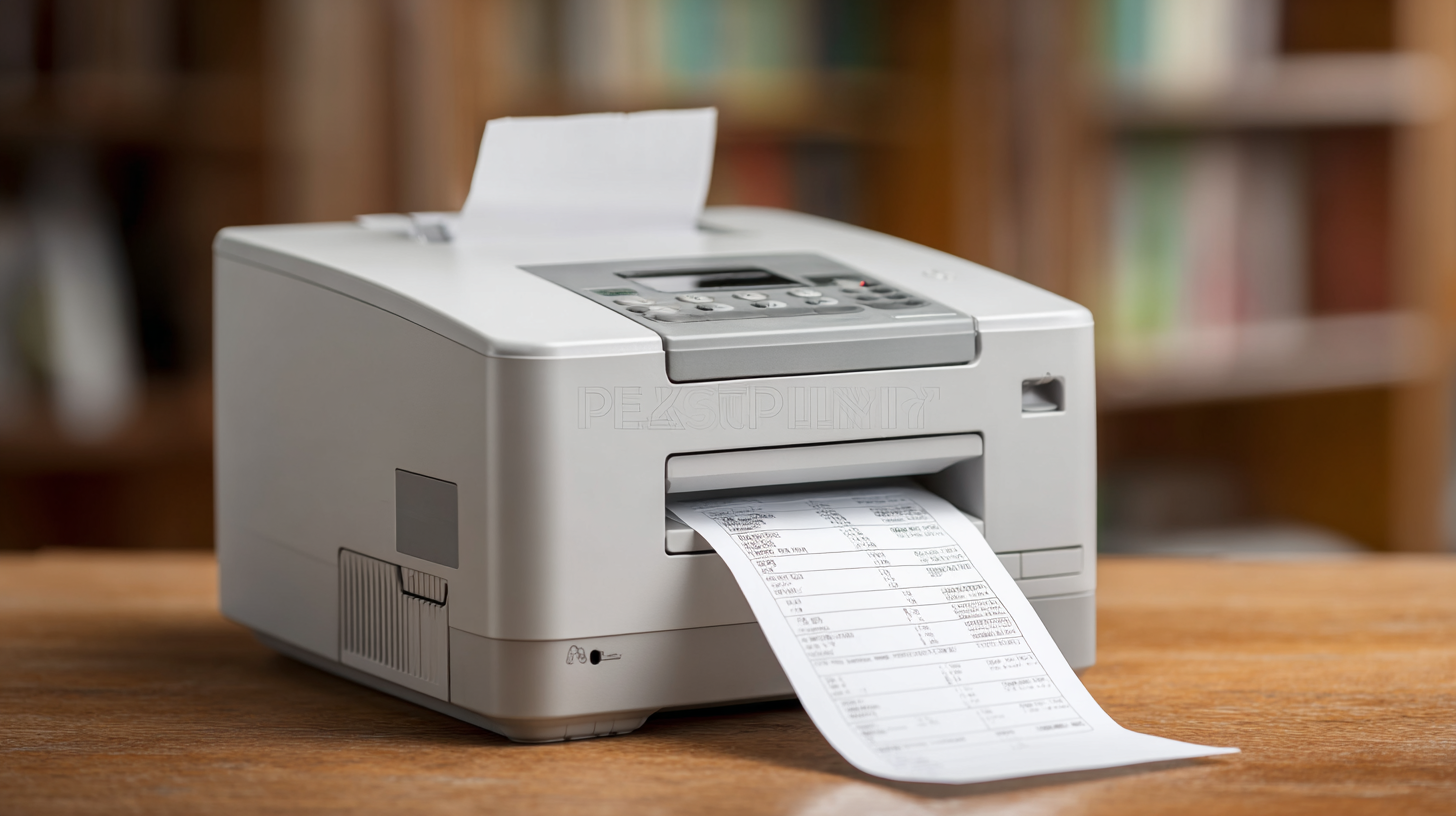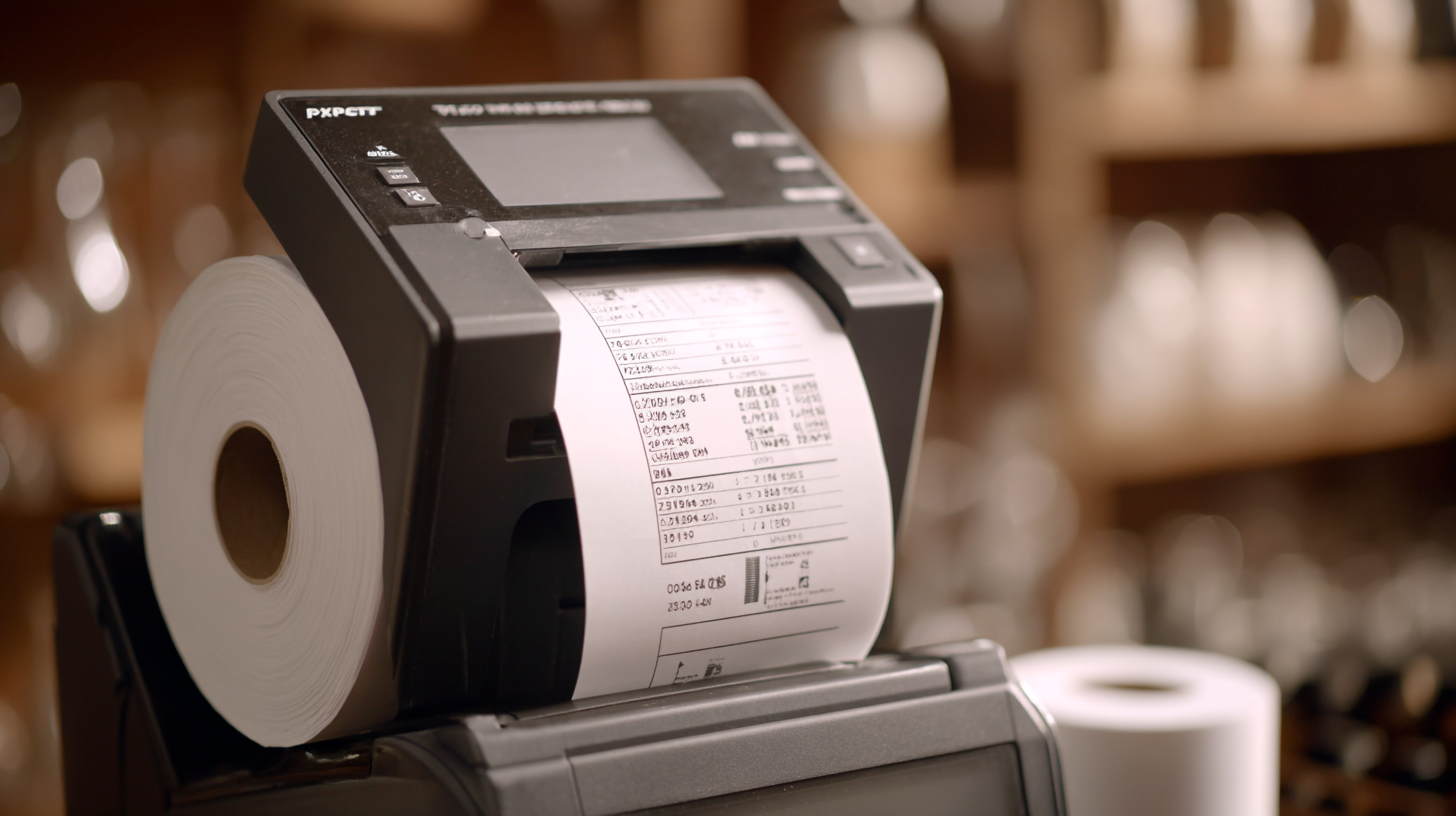In today's fast-paced business environment, choosing the right receipt printer is paramount for enhancing operational efficiency and customer satisfaction. According to a recent industry report by MarketsandMarkets, the global point-of-sale (POS) printer market is projected to reach $5.3 billion by 2025, illustrating a significant shift towards digital payment systems and automated solutions. As businesses look to streamline their processes, factors such as speed, reliability, and compatibility with existing technology have become critical in selecting a receipt printer. Moreover, the rise of cloud-based services and mobile payments has further transformed the landscape, necessitating a thoughtful approach to integrating receipt printers that can adapt to evolving customer needs. This blog will guide you through the essential considerations and key trends that will shape your decision-making process in selecting the best receipt printer for your business needs.

When selecting a receipt printer for retail environments, several key features should be prioritized to ensure it meets the specific needs of your business. According to a report by Grand View Research, the global receipt printer market is expected to reach USD 2.06 billion by 2027, indicating the growing importance of efficient transaction processes in retail. A top-performing receipt printer should offer high-speed printing, typically around 200 mm per second, to keep customer lines moving swiftly and reduce wait times, which is critical for customer satisfaction.
Another crucial feature to consider is connectivity options. Modern receipt printers should support multiple connectivity methods, such as USB, Bluetooth, and Wi-Fi, allowing for seamless integration with various point-of-sale (POS) systems. A study from Technavio highlights that businesses that adopt versatile printing solutions can improve their operational efficiency by as much as 25%. Additionally, look for models that are compatible with mobile payment solutions, as consumer preferences are rapidly shifting towards cashless transactions. Adopting a printer that accommodates these features will not only enhance your retail operations but also align with current market trends.
When selecting a receipt printer, understanding the types of technologies available is crucial. The two most common types are thermal and impact printers. According to the International Data Corporation (IDC), thermal printers account for approximately 70% of the global market share, primarily due to their speed, efficiency, and low maintenance requirements. Thermal printers use heat to print on specially coated paper, resulting in faster printing times, which is essential for high-traffic environments like retail stores. Additionally, with advancements in thermal printing technology, many models now support mobile printing, enhancing flexibility for businesses.
On the other hand, impact printers are known for their durability and ability to print on multi-part forms. They operate by using a print head that strikes an ink ribbon against the paper, making them ideal for environments where carbon copies are necessary. According to a report by MarketsandMarkets, the demand for impact printers is expected to grow at a compound annual growth rate (CAGR) of 3.1% through 2025, driven largely by the requirements of the logistics and warehouse sectors. While these printers may not match the speed of thermal printers, their ability to produce multiple copies makes them invaluable in certain business applications. Thus, understanding the strengths of each technology is essential for making an informed purchasing decision.
When selecting a receipt printer for your business, connectivity options are crucial to ensuring seamless integration with your existing systems. The three primary connectivity types to consider are Bluetooth, USB, and Ethernet, each offering distinct advantages based on your operational requirements.

Bluetooth printers are ideal for mobile businesses or environments where flexibility is essential. They enable wireless printing, allowing employees to take orders and print receipts without being tethered to a fixed location. This feature not only enhances mobility but also reduces clutter, making it easier to manage space in a mobile point-of-sale setup. On the other hand, USB connections are perfect for smaller setups where the printer is stationed close to the computer. They offer straightforward installation and reliable connections, though they do limit mobility compared to their wireless counterparts.
Ethernet connectivity is advantageous for businesses with multiple workstations needing access to a centralized printer. It facilitates easy sharing among devices, ensuring that staff can print receipts from different locations in real-time. This type of connection is especially beneficial in larger retail environments or restaurants where efficiency and quick service are paramount. By assessing your business model and workflow, you can choose the connectivity option that best supports your operational needs and enhances customer satisfaction.
When selecting a receipt printer for high-demand business situations, assessing print speed and volume is crucial. Fast and efficient printing can significantly improve customer satisfaction and streamline operations, particularly in busy retail or hospitality environments. Look for printers that can process multiple receipts per minute while maintaining high-quality output, as this can help to mitigate long wait times for customers.
**Tip:** Consider the printer's compatibility with your existing POS system to ensure smooth integration. A printer that connects easily to your software can enhance overall efficiency. Additionally, evaluate the printer's capacity to handle high print volumes, especially during peak hours. A printer designed for heavy use will reduce the risk of malfunctions and breakdowns, ensuring uninterrupted service.
**Tip:** Always check for features such as automatic paper loading and easy maintenance. These features can save valuable time and resources in busy situations, allowing you to focus more on customer service rather than technical issues. Investing in a printer with a solid warranty and reliable support is also important, as it can provide peace of mind in fast-paced environments.
When choosing a receipt printer for your business, understanding the balance between cost and value is essential for making a long-term investment. While it may be tempting to opt for the cheapest option available, this could lead to higher costs down the line due to frequent maintenance, replacements, and inefficiencies. Evaluating your specific business needs is crucial; consider factors such as printing volume, the types of receipts you generate, and connectivity requirements. These elements will help you identify a printer that offers the best value without compromising on quality.

Investing in a more expensive printer may seem daunting at first, but the benefits often outweigh the initial costs. High-quality printers tend to have faster printing speeds, increased durability, and better customer support, which can all contribute to a smoother operation and greater customer satisfaction. Additionally, assessing the total cost of ownership, including energy consumption and supplies, will provide a clearer picture of the long-term financial impact. By taking the time to evaluate both cost and value, you can make a wise decision that enhances your business efficiency and fosters growth.
